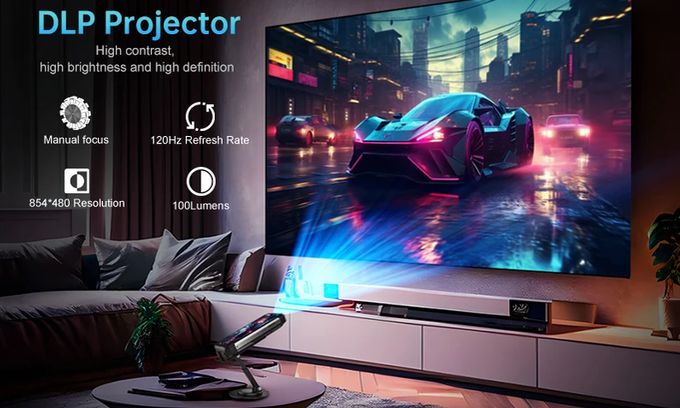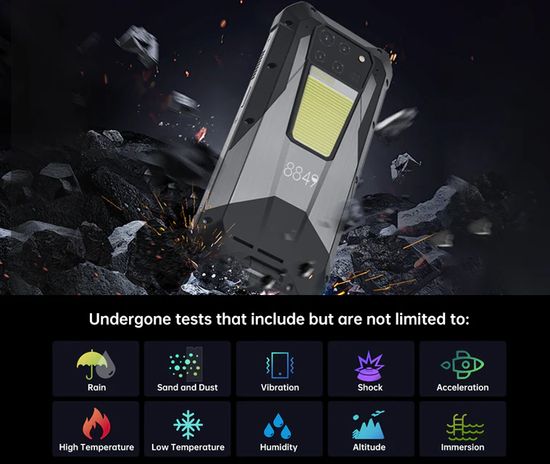More than 10 years ago at the Mobile World Congress, Samsung introduced the Galaxy Beam i8530 with a built-in DLP projector, which became the first projector-phone.
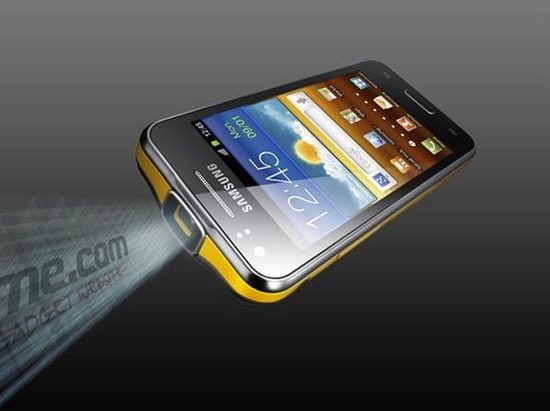
The hype of this trend reached its peak in 2020, when the list of popular hybrid models included Blackview MAX 1, Moviphone, Qantum V, Movi.
Unfortunately, the high price and modest specs became an insurmountable obstacle to their further development. Indeed, the built-in projector increased the phone price by $ 300-$ 400. As a result, buying a phone and a pico projector separately was 20-30% cheaper.
Today the situation has changed. For example, the price difference between the new Unihertz 8849 4 Pro with a projector and the Shark 3 without a projector, the specs of which are almost identical, is only $ 200 ($ 700 vs $ 500). For comparison, the price of the ultra-compact AAXA LED Pico (25 lumens) or Kodak Ultra Mini (75 lumens) also reaches $ 200, which makes buying a hybrid more profitable.
Projector-phones
To be fair, a few years ago Samsung and Nokia announced Galaxy Beam 3 (2021) and Nokia Projector Phone 5G. But there was no continuation.
Nevertheless, high consumer demand remained. As a result, Chinese Unihertz took the initiative by introducing the phone-projector Tank 2.
This company specializes in rugged models with ultra durable case (IP68 protection class or military MIL-STD-810H standard), powerful battery, etc.
They are mainly intended for camping, so their fairly large size and weight are not critical. But the monstrous battery capacity (23,800mAh in Tank 3 Pro) practically eliminates the problem of battery consumption for the projector function. Therefore, an integrated projector in a rugged phone was a very logical decision.
The consumer market enthusiastically accepted the new product, and company over the past few years has introduced the Tank series of 7 models. It includes Tank 2 (2023), 2 Pro, 3s and 3 Pro (2024) with built-in projectors.
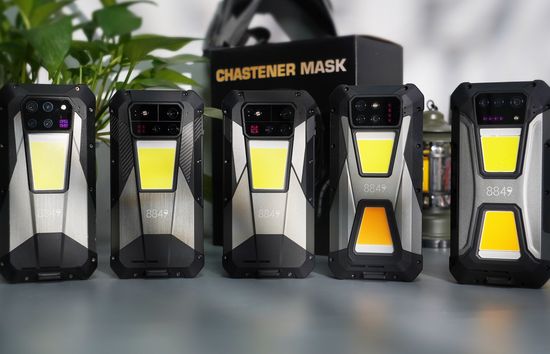
Of course, other companies are not wasting any time either. In particular, Oukitel WP100 Tinan (2025) has become a successful competitor to the Tank 3 Pro. But overall, the Unihertz 8849 brand really claims dominance. This year was no exception and the company introduced the new Tank 4 and Tank 4 Pro. Thus, the line of current Tank projector-phones includes 3 Pro, 4 and 4 Pro models.
The integrated DLP projectors in all models provides brightness up to 100 lumens and supports 120Hz refresh rate. But unlike last year’s Unihertz 8849 Tank 3 Pro with WVGA (Wide Video Graphics Array, 854 x 480 pixels) resolution, 460:1 FOFO contrast and manual focus, the projectors in new models offer HD (High Definition, 1,280 x 720) resolution and fast auto laser focus.
Tank 3 Pro vs Tank 4 vs Tank 4 Pro
– price – $ 570 vs $ 420 vs $ 700;
– display – 6.79″ FHD (1,920 x 1,080) 120Hz TFT LCD Display (396 ppi) vs 6.78″ QHD (Quad High Definition or Quad HD or Wide Quad HD, 2,650 x 1,200) 120Hz AMOLED Display (429 ppi) vs 6.73″ QHD+ (3,200 x 1,440) 120Hz AMOLED Display (521 ppi).
For reference, resolution directly affects pixel density, which in turn provides more detailed images;
– battery – 23,800mAh & 120W fast charger vs 11,600mAh & 66W fast charge vs 11,600mAh & 120W fast charge;
– camera – 200MP AI Main Camera + 64MP Super Night Vision vs 50MP AF Main + 64MP Night Vision + 32MP Front + 8MP 3X AF Telephoto Camera vs 50MP Main (1/1.3 inch photosensitive unit)+64MP Night Vision+50MP Telephoto + 32MP Front;
– memory – 36GB RAM (18GB + 18GB Extended Ram) & 512GB ROM + 2TB TF Expandable vs 24GB (12GB+12GB Virtual) RAM + 512GB ROM vs 16+512GB/18GB+1TB storage;
– size@weight – (86 x 179 x 29.8 mm)@696 g vs (86 x 179 x 23.9 mm)@538 g vs (86 x 179 x 31 mm)@530 g;
– Key Features – Camping Light + Red & Blue Warning Light vs Dual Nano SIM Card + TF Card.
Last year’s model uses a significantly larger battery (23,800mAh vs 11,600mAh) and a superb set of cameras.
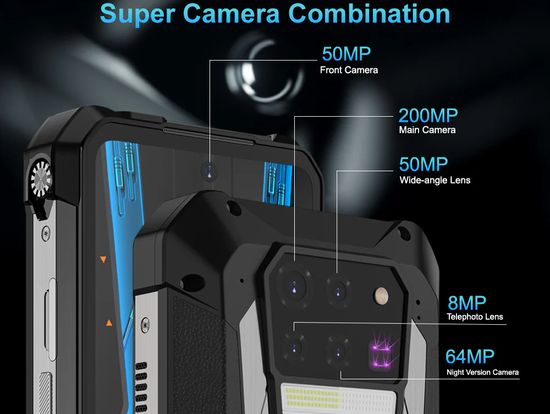
The new 4 Pro is lighter (530 g vs 696 g), uses a more powerful MediaTek Dimensity CPU 8300 and an improved AMOLED Display (QHD+ vs FHD resolution, and 521 vs 396 ppi). The built-in projectors of the new models received a higher resolution (HD / (1,280 x 720) vs WVGA / (854 x 480)) and fast auto laser focus.
MediaTek Dimensity 8200, 7300 and 8300 CPU
Of course, the new MediaTek Dimensity 8300 CPU is one of the main bonuses of the Tank Pro 4.
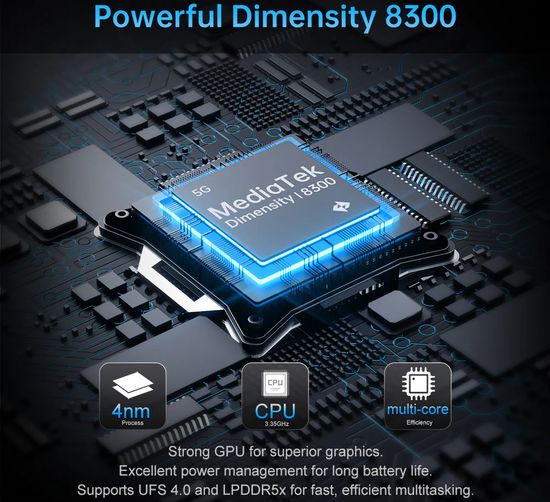
8200 vs 7300
Pros of MediaTek Dimensity 8200:
– supports 100% higher memory bandwidth (51.2 vs 25.6 GB/s);
– performs 36% better in floating-point computations;
– shows better AnTuTu 10 score – 934K vs 671K;
– 24% higher CPU clock speed (3100 vs 2500 MHz);
7300 Pros:
– higher GPU frequency (~10%).
8300 vs 7300
Pros of MediaTek Dimensity 8300:
– supports 166% higher memory bandwidth (68.2 vs 25.6 GB/s);
– performs 4x better in floating-point computations;
– AnTuTu 10 score – 1406K vs 671K;
– 34% higher CPU clock speed (3350 vs 2500 MHz);
– higher GPU frequency (~34%);
– better instruction set architecture.
8300 vs 8200
8300 Pros:
– CPU Performance – up to 20% more performance;
– GPU Performance – up to 60% more performance;
– energy efficiency – up to 30% and 55% for CPU and GPU, respectively;
– architecture – Cortex-A715 and A510 cores vs Cortex-A78 and A55 cores;
– connectivity (Wi-Fi 6E) – speed up to 5.17 Gbps vs 4.7 Gbps.
In fact, Dimensity 8300 offers a smoother and faster experience, especially in graphically intensive apps, and more power-efficient with longer battery life.
Conclusion
The Chinese company has successfully confirmed its ambitions to dominate the rugged projector-phones segment. The Tank 4 Pro successfully replaces last year’s flagship 3 Pro. Of course, a twofold reduction in battery capacity from 23,800mAh to 11,600mAh may seem controversial. On the other hand, the power-bank function in the phone seems a little extravagant. Frankly speaking, today companies offer a huge range of specialized power-banks that perfectly solve this problem when camping. At the same time, the reduction in capacity allowed the developers to reduce the phone weight to 530 g, which is great for a model with IP68 protection class (military MIL-STD-810H standard).
At a 20% price increase ($ 700 vs $ 570), the new flagship offers an AMOLED QHD+ display with 521ppi and a more powerful MediaTek Dimensity CPU 8300. In addition, its built-in projector have a higher resolution (HD / (1,280 x 720) vs WVGA / (854 x 480)) and fast auto laser focus instead of manual. A realistic idea of its image quality will protect the user from possible disappointment. Of course, 100 lumens is very little and will hardly compensate for even diffuse daylight. But in the dark, it provides sufficiently saturated colors on a screen up to 100 inches diagonally, which is quite enough for camping.
The Tank 4 is the budget version of the new flagship. Priced at just $420, it also offers an improved projector and AMOLED QHD display, but uses a less powerful MediaTek Dimensity 7300.
Overall, camping fans get great devices that will fill their vacation with colorful emotions.
This video offers Tank 4 Pro vs Tank 3 Pro side-be-side screen comparison.
